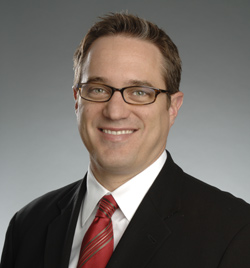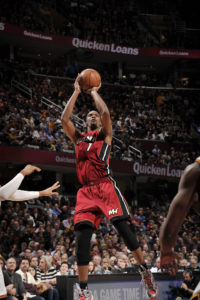Invest: Miami speaks to Sherwood Neiss, Partner, Crowdfund Capital Advisors
Business partners Jason Best, Sherwood Neiss and Zak Cassady-Dorion knew they were against the odds when lawyers told them it was impossible to change a law.
In 2010, the three entrepreneurs had realized that the law didn’t allow small and medium-sized businesses to raise capital through crowdfunding as a result of an outdated system set in place by the Securities Act of 1933 and other laws. These laws did not allow entrepreneurs to raise money from friends and family who were not rich nor did they allow entrepreneurs to use the Internet, social media or any form of technology that we use today to help facilitate fund raising.
But, as Best recounted during a 2013 TED talk, he and his partners didn’t listen to the naysayers: “Entrepreneurs are naive. Entrepreneurs do things that are supposed to be impossible. They do things they’re not supposed to do.”
The trio set out to make the impossible become possible and change the system. Eventually, their ideas for a new framework that accommodated the nation’s modern, web-based entrepreneurial landscape eventually became the JOBS Act (Jumpstart Our Business Startups), which was signed into law by President Barack Obama.
Today, Best and Neiss are the principals of Crowdfund Capital Advisors, which are partners with the State Department’s Global Entrepreneurship Program and The World Bank. The company advises organizations on how to use crowdfunding to create an environment where jobs creation and entrepreneurship flourishes. They travel the globe reaching governments, multilateral organizations and regulators in more than 40 countries to make crowdfund investment work for them. Many are familiar with the basics of crowdfunding due to the success of websites such as Kickstarter, but Best and Neiss elevate investors’ knowledge, informing them of the new types of crowdfunding as well as the law’s recently passed titles.
Invest: Miami sat down with Neiss to discuss the titles of the JOBS Act as well as Miami’s crowdfunding potential.
INVEST: MIAMI: Tell us about the differences between the three crowdfunding JOBS Act titles.
SHERWOOD NEISS: When the JOBS Act passed in 2012, it introduced online fundraising for entrepreneurs and online investing for retail investors. First was, Title II that allowed businesses to raise capital online from accredited investors. Subsequent to that, Title IV went live that allows businesses to go to both accredited and nonaccredited investors for capital and can raise up to $50 million online. And finally with Title III, startups are now able to raise up to $1 million on debt and equity crowdfunding platforms as long as they are registered with the Securities and Exchange Commission. This will allow retail investors and entrepreneurs to expand their horizons and invest in endeavors they want to support. It’s important for entrepreneurs to understand all the provisions to determine which is right for you and your business. For instance, Title IV is good for larger companies as the process is more complicated and there’s more documentation. Smaller business may fail on Title IV because it is too expensive and time consuming. Think of these 3 types of crowdfunding like different tools in a toolbox. Sometimes you need a hammer, sometimes a screwdriver and sometimes a wrench. Pick the right tool for your specific funding situation.
I:M: What does the data you are tracking show about what makes a successful campaign?
NEISS: Crowdfunomics is a new phenomenon today. It combines social media with finance. Crowdfund Capital Advisors (CCA) has developed a formula based on feedback from both successful and unsuccessful campaigns, giving us the ability to tell you exactly what makes a successful campaign or not. An important part of crowdfunding is, of course, the actual crowd. Social networks formed through real life and internet networking are the new sources of capital, and 80 percent of the capital raised is coming from these 1st and 2nd degree connections –it’s many small investments that make one big investment. Next is the communication that takes place between prospective investors and the company. This includes the video that sells the company’s vision, the team and the need and use of capital. It must be short, to the point, and compelling. Also entrepreneurs need to be interacting with prospective investors online during the fundraising process. If they fail to communication their chances of funding success diminishes. And finally is the structure under which you are raising capital. You need to match the corporate structure and the type of security to the needs of your investors. If you fail to get this right, then you will most likely not get funded. Corporate structures and security types need to be easily understood.
I:M: Tell us more about your partnership with Venture Hive. Do you have any other partnerships here in Miami?
NEISS: Now that the JOBS Act titles passed, education and training become the next most critical step. While experienced entrepreneurs, we are not experts in education, and so it becomes essential to partner with those entities that have educational expertise. Venture Hive, lead by Susan Amat, was the natural partner given their platform of turning our content into training models. Venture Hive’s programs are hands-on and interactive and give entrepreneurs the tools to understand the different crowdfunding platform available to them through the new JOBS Act titles.
I:M: Miami talks about being the next Silicon Valley, but it still has quite a way to go, especially on the investor side. How does crowdfunding help Miami achieve its goals?
NEISS: Miami has a lot of people with a lot of money who are looking for interesting investment opportunities, but it is true that the crowdfunding and startup ecosystem is still emerging. The opportunity is huge for Miami: Miami has the ability to be the U.S.’s next success story, and while eMerge brings us recognition, it should only be considered the tip of the iceberg: Miami needs strong actions from our political leaders, including training programs, conferences, events and media coverage as well as compelling incentives to start and keep your business here.
To learn more about Capitalfund Capital Advisors visit thier website: www.CrowdfundCapitalAdvisors.com




 market?
market?
 The legal industry is quickly changing and the value an attorney provides is more than about knowledge of legal statutes. The focus has to be on understanding a client’s business and how to solve problems—not just legal ones. The problems a client may encounter will have many facets, and a good attorney should always seek to serve as the quarterback. You want to become the first person the client consults to strategize on finding a solution. This flexible and dynamic approach is what attorneys today need in order to be competitive.
The legal industry is quickly changing and the value an attorney provides is more than about knowledge of legal statutes. The focus has to be on understanding a client’s business and how to solve problems—not just legal ones. The problems a client may encounter will have many facets, and a good attorney should always seek to serve as the quarterback. You want to become the first person the client consults to strategize on finding a solution. This flexible and dynamic approach is what attorneys today need in order to be competitive. Our goal is to honor the proud winning tradition of the Dolphins and bring the team to a place where it is competing for championships every year. We celebrated our 50th season in 2015. For a part of that time, we were the only professional sports franchise in Florida and we had a lot of success. Because of that history, the team has a deeply emotional and meaningful connection with its fans, who are passionate and loyal. From a business strategy standpoint, we want to respect the passion of those supporters and find new ways to en- gage with them and enhance their experiences with the Dolphins. We are looking at the end-to-end experience, from concessions, security protocols, even bath- room conditions, and are measuring everything to try to set benchmarks and bring about improvements. Additionally, we are looking at new ways to open the dialogue with fans and make their voices more meaningful. We could presume to know what they want, but I find it’s a lot easier and more effective to simply ask them.
Our goal is to honor the proud winning tradition of the Dolphins and bring the team to a place where it is competing for championships every year. We celebrated our 50th season in 2015. For a part of that time, we were the only professional sports franchise in Florida and we had a lot of success. Because of that history, the team has a deeply emotional and meaningful connection with its fans, who are passionate and loyal. From a business strategy standpoint, we want to respect the passion of those supporters and find new ways to en- gage with them and enhance their experiences with the Dolphins. We are looking at the end-to-end experience, from concessions, security protocols, even bath- room conditions, and are measuring everything to try to set benchmarks and bring about improvements. Additionally, we are looking at new ways to open the dialogue with fans and make their voices more meaningful. We could presume to know what they want, but I find it’s a lot easier and more effective to simply ask them.